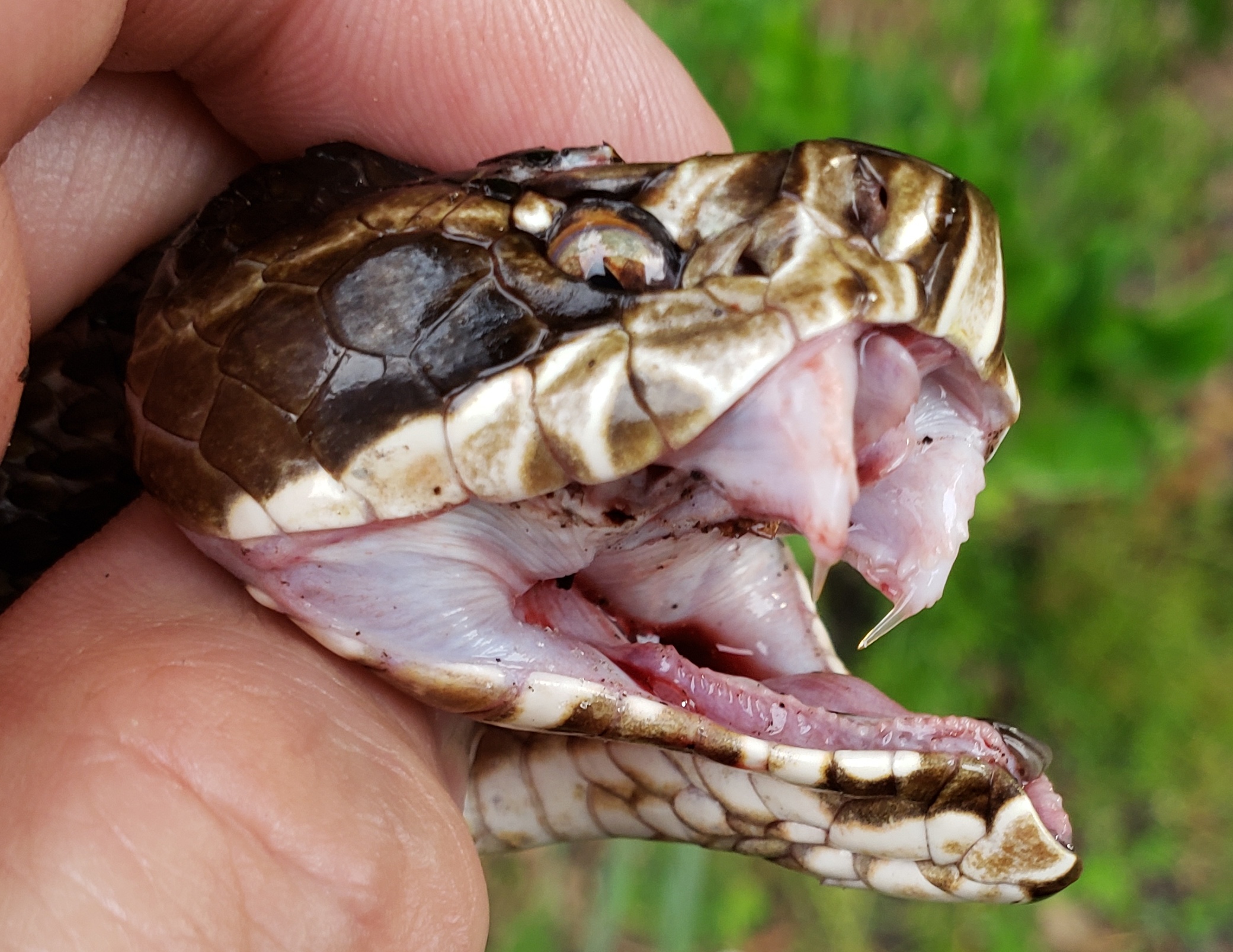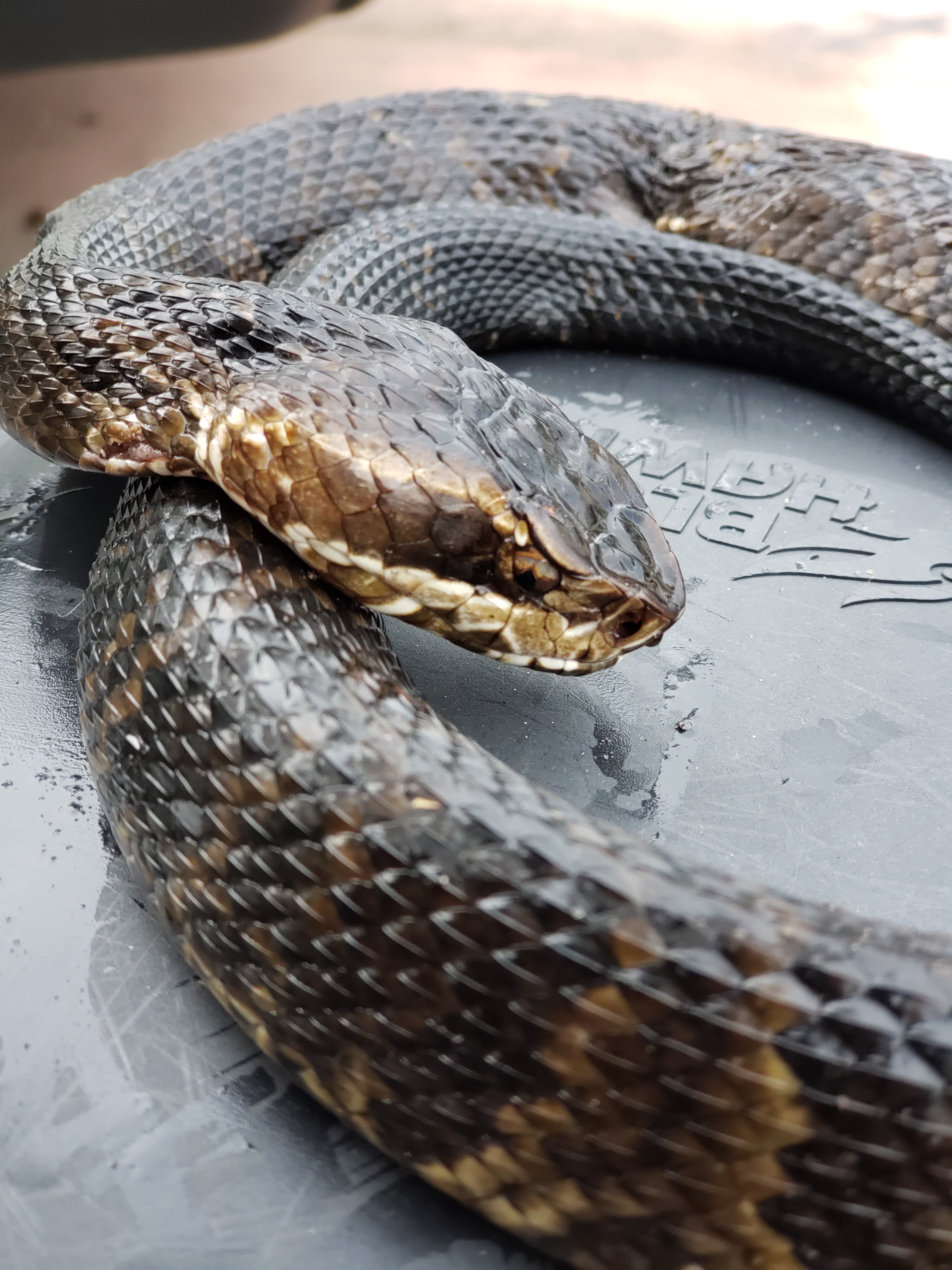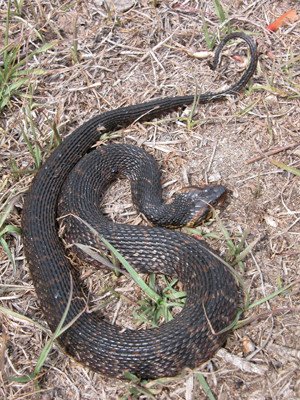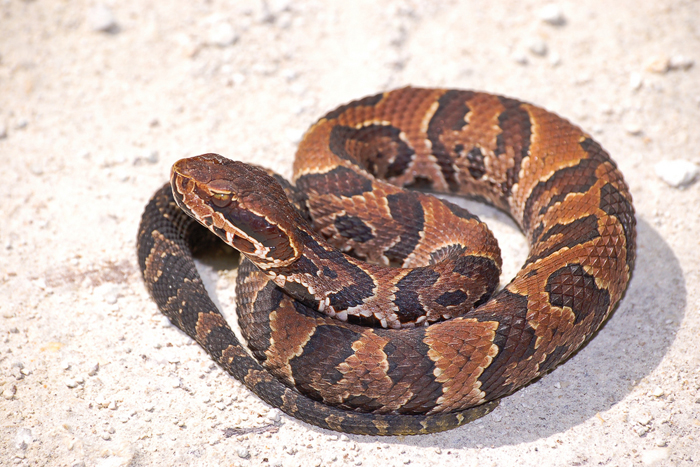
With so much rain and rising water comes Florida nature.
Imagine finding a cottonmouth, a.k.a water moccasin, a.k.a viper, right outside the door of your home.
Well, on Tuesday, that is exactly what happened to one woman and her little boy.
At first, her little boy thought it was a black snake. However, when the mother looked closer, she said she immediately knew that it wasn’t.
Article continued below

The Florida Fish and Wildlife Conservation Commission says this sort of thing is not uncommon during the rainy season, especially if you live near a lake, pond, river, or marshy area prone to flooding.
Although its aggression has been exaggerated through storytelling, a cottonmouth, which is a species of pit viper, can deliver a painful, and on rare occasion, fatal bite if threatened.
The cottonmouth is also the only semiaquatic snake in the viper family.
According to FWC, humans are rarely bitten, but if they are, it is typically because the snake was being mishandled.
Officials say that if you have small children and live in a wooded or marshy area that, you should teach your child snake safety and identification. If you as a parent are scared of snakes or do not wish to teach your child how to identify a venomous snake, then teach them to leave all snakes alone. Children can be curious, and though rare, Children’s Hospital says snakebites in small children do occur. Majority of bites occur when children play in a wooded area, are barefooted during snake season, or blindly reach into rocky areas or where wood is stored.
Unlike the rattlesnake, the cottonmouth typically slithers away from danger and will only strike when it is cornered and feels like it cannot escape.
The cottonmouth is a venomous snake, unlike the banded water snake, which is oftentimes mistaken for a cottonmouth and killed. The banded water snake, when threatened, will flatten its body and head, giving it the appearance of a viper, therefore scaring off predators. However, the menacing look the snake gives to warn off predators is the same reason humans often mistake it for a cottonmouth — that and the very similar colors and body markings.
Article continued below

The banded water snake, while very similar in appearance to the cottonmouth, has rounded pupils and lacks the heat-sensing pits on its face. The cottonmouth has cat-eye like pupils, almost evil looking some say.
Article continued below

The juvenile cottonmouth also looks completely different from an adult. The juvenile has sometimes been mistaken for a corn snake or northern watersnake due to its brighter colors. The bright colors and yellow-tipped tail of a juvenile cottonmouth disappear as it gets older.
For more on identifying snakes, you can visit the Florida Museum.
The woman and the boy were not harmed during the encounter.
